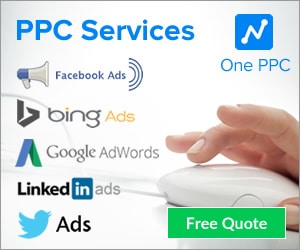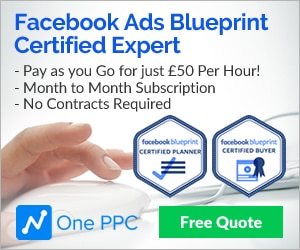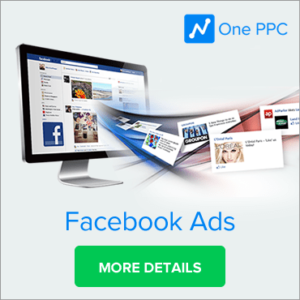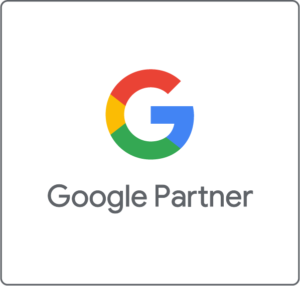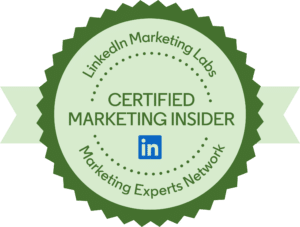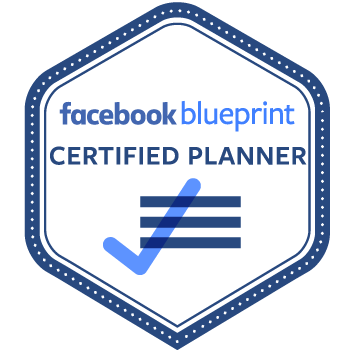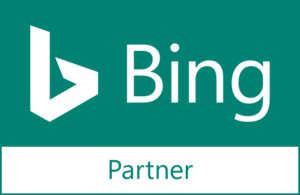Ad copy is the text within an advertisement that is used to persuade a viewer, reader, or listener to take a particular action, such as purchasing a product or service. Ad copywriting is when you write persuasive text to urge people to buy a product or use a service. Some examples of where ad copy can appear are on billboard ads, flyers, trading cards- really anywhere that advertising appears!
Ad copy is an important part of any advertising campaign and should be given careful consideration in order to create the most effective ads possible. By using an ad platform like Google, you can test which part of your business offering is most appealing to potential customers through A/B testing of ad copy.
Table of Contents
- Advertising Copy Format
- Google Ads Format
- Types of ad copy elements:
- Align Ads with the Buyer Funnel
- Advertising on Ad Platforms
- Types of Ad Platforms
- Ad Copy Tips
- Understand the business offering
- Create a Buyer Persona
- Competitor Research
- Your Elevator Pitch
- Less is More
- Use Power Words As A Way To Create Urgency
- Focus On The Benefits You Offer (not Features)
- Use the So What Test.
- Speak Directly To The Consumer
- Anticipate Objections
- Headlines Grab Attention
- Call to Actions: Clear and Compelling
- Research, research, research
- What is life without your product or service
- Expressing emotion
- Speak with empathy
- Use active voice
- Get Personal
- Appeal to Ego
- Open with a question
- Use Action Verbs
- Use “you” and “your”
- Use Persuasive Language:
- Be Visual
- Communicate using the five senses
- Be topical and relevant
- Sense of Urgency with FOMO
- Use Numbers
- Use Statistics
- Limit clickbait
- Match Search Intent
- Expand Base Advert with Ad Extensions
- Camel Case Emphasis
- Seasonal Ads
- Landing Pages
- Determine Best-performing Ad Copy
- Test Different Versions
- Reporting on Performance
- Conclusion/Summary
Advertising Copy Format
If you’re new to writing ad copy, you might be wondering what the structure looks like. As a rule of thumb, your ad copy should have three parts: headline, description, and CTA.
- Headline: captures the attention of your audience;
- Description: tells your audience about your product or service.
- CTA: A call to action is a request for your audience to take some kind of the desired action.
Keep these three elements in mind as the foundation of your ad copy, and then have fun with it–write multiple versions! You might be surprised to find that simply changing one word can make all the difference. Additionally, there are times when an effective headline stands on its own and doesn’t require a description.
In general, it’s preferable to include all three sections. This allows you to only worry about making your headline truly captivating, instead of having to also turn it into a description. The CTA must be present no matter what—you can’t lose people’s attention after finally grabbing it. With so many ads constantly on our minds, if you don’t give viewers the next step right away, they’ll likely forget about you in seconds. Always make sure that your next move keeps people engaged (which will also increase your CTR).
Google Ads Format
The amount of text you can have in your ad copy varies depending on how Google decides to display the lines of copy and the ad extensions. Google will generally show up to three headlines and two description lines – a 30-character headline and a 90-character description. Sometimes, though, Google will only display two headlines and one description line, with no ad extensions or just a few ad extensions.
In the example below, you can see that Google is displaying two headlines, one description line and one ad extension.
Types of ad copy elements:
1. Headline
2. Description
3. Call to Action (CTA)
4. Display URL
Headline:
The headline is the most important part of your ad as it is what will catch the reader’s attention and make them want to read more. A good headline should be around 30 characters long and should be relevant to the product or service you are offering. You can also use symbols in your headlines to break up the text and make it more eye-catching, but be sure not to overdo it as this can make your ad seem unprofessional.
Description:
The description is where you will expand on the information in your headline and give more details about what you are offering. A good description should be around 90 characters long and should include a call to action (CTA) telling the reader what you want them to do, such as ‘click here to learn more’ or ‘buy now’.
Call to Action:
The CTA is an important part of your ad copy as it tells the reader what you want them to do, such as click on your ad or buy your product. A good CTA should be short and to the point, and should be placed at the end of your description so that it is easy for the reader to find.
Display URL:
The display URL is the web address that will be shown in your ad, and should be relevant to the page you are sending the reader to. A good display URL should be short and easy to remember and should include the main keyword for your ad so that people know where they will be taken when they click on your ad.
Align Ads with the Buyer Funnel
The buyer funnel is a model that describes the journey of a potential customer as they move from awareness to interest to decision. By understanding this journey, businesses can create marketing campaigns that are more effective at moving prospects through the funnel and ultimately converting them into customers. Write copy that targets people at each stage of the funnel.
The AIDA model (Attention, Interest, Desire, Action) is the most well-known advertising model: It covers the stages of the buyer funnel:
1. Awareness: The prospect becomes aware of their problem or need.
2. Interest: The prospect begins to take notice of your product or service and starts to consider whether it’s right for them.
3. Decision: The prospect decides whether to buy your product or service.
4. Action: The prospect takes action by buying your product or service.
Advertising on Ad Platforms
Depending on the medium and platform you’re going to use, you’ll have to adjust the sizes of your ads, which in turn has an effect on your copy. Depending on who your target audience is and what you hope to achieve, you will engage potential customers at various stages of the buying process with different objectives in mind. You will also be able to change your campaign pitch based on where your target audience is in their buyer journey. Thus, ensuring that they are more likely to convert.
For example, Google Display advises using one of their five top ad sizes for the best results—each varies in size and shape. Your text could look exceptional on a large rectangle but not so great on a leaderboard. So you now have to decide whether to change your copy for each separate ad or write one general piece that looks good regardless of the format.
Meta’s Facebook News Feed ad specifications include the character limits for primary text, headline, and description. Creating attractive ads that follow these recommendations ensures that your ads will look clean and professional in the newsfeed. LinkedIn has sponsored content with similar specifications. It’s important to remember that social media platforms regularly have updates and changes, which means their advertisement specifications might also be different. So it’s crucial to stay alert for those types of announcements. If you’re thinking about print ads as well, don’t forget to factor in their sizes and placement when making your decisions.
Types of Ad Platforms
There are many types of ad copy, each serving a different purpose. The style of the ad also varies depending on the platform. Here are some examples:
Search advertising
Companies will pay money in order to have their advertisements shown on search engines when it is relevant to the person’s searches. If you choose to use this method, be sure to include a convincing meta headline, description, and landing page. These short, keyword-focused ads appear in search engine results pages and are designed to drive traffic to your website.
Banner ads
Display marketing is a digital advertising technique that uses rich media, such as videos, pictures, and banners to capture the user’s attention. These banner-style advertisements can be placed on websites and apps, and are often used to Promote a product or brand. Social ads: As the name suggests, social media advertising is any form of paid promotion that appears on social platforms like Facebook, Twitter or LinkedIn
Social advertising
Advertisements that utilize social information and media networks are more likely to engage customers and maintain relationships.
Ad Copy Tips
A copywriter’s job is to write content that will stand out to your target audience and make them want to interact with your brand. This could be anything from clicking on a call-to-action, visiting your website, making a purchase, or following you on social media.
When writing ad copy, it is important to keep the following things in mind:
Understand the business offering
While ad copy varies by company, we will cover core principles that can be applied to any company.
Every company has a business offer consisting of unique selling points, features, benefits, guarantees, statistics, benchmarks, promotions, calls to action, proof, testimonials, qualifications and certifications. Your competition may be similar, but your ad copy testing results show what sets your business apart and appeal to potential customers.
Ad copy often includes a call to action, USP, benchmarks and keyword-driven attention-grabbing headlines. Your unique selling proposition can also be a call to action or guarantee. A call to action is usually a short phrase urging the reader to take immediate action such as “call now” or “book a free consultation”.
Testimonials are positive statements from happy customers vouching for the quality of the product or service. Benchmarks offer data which verifies claims made in the advertising text. It’s crucial that your landing page offer expands from the advertisement so that there is a logical connection between them.
Many marketing pieces try to be too vague, and as a result, the reader does not understand what makes the company’s product or service special. Ask yourself what your product or You should make it easy for customers to see immediately what sets you apart from similar companies by highlighting your unique selling point in an obvious place
Create a Buyer Persona
Think about the people you are selling to and what they really want. Try to think from their perspective as a customer in need, rather than your position as a copywriter or company employee. With your copy, address their problem with a solution that sells. Copywriting is essentially being able to respond to someone’s needs through writing.
When brainstorming a list of ideas, remember to consider your target audience’s age, location, and language preferences. You wouldn’t want to use formal language with a teenage target market or youth slang with elderly people. Keep that in mind while you’re writing your copy!
Competitor Research
Before you release your product or service to the public, it’s crucial that you research what other similar products or services exist. This way, you can determine if someone else has already had your idea, and if so, how they went about executing it. Is their method similar to yours? Could you improve upon their design? Once you have answers to these questions, marketing your product will be much simpler.
For instance, if you desire to sell furniture, first assess the other brands in the market and identify your unique selling points. Are you able to offer lower prices? More aesthetically pleasing designs? Greater durability?
Once you know your competition, it will be easier to determine what makes your product special. And as we talked about before, a great hook results in more concise copy (and greater sales potential).
Furthermore, your target market will compare you to your competitors. They won’t just buy your product; they’ll examine it against others like it and come back later—if they’re interested at all. Learning about what similar products are out there can help you address people’s questions or concerns before they arise.
Your Elevator Pitch
If you had only a few seconds to explain your idea to a business executive, what would you say?
This is known as an elevator pitch. An elevator pitch, much like a six-word story, requires you to distil only the most pressing information and deliver it in an interesting way. So captivating, that when the studio executive hears it, they’ll say: “Tell me more.” Use your creativity and explore different avenues–you might just find a great idea to use for your ad copy.
Less is More
Advertisements are typically brief, and you don’t want your audience to lose interest before they get to the call to action. Get straight to the point and make sure your message is clear. It should also be attention-grabbing and interesting so that viewers will want to read or listen to it. Ad copy should be well-written and persuasive in order to be effective. In addition, ad copy should be believable and trustworthy, so that viewers will consider what it is saying.
Short and snappy is a must if you want to make your ads successful. If users don’t click, they aren’t going to convert. There are many other things you’ll need to bear in mind if you’re going to get your Google ads copywriting on point too.
Keep it simple and specific: Focus on 1-2 selling points for a stronger impact. If you try to pack too many selling points in your ad text, your message can get lost. Oftentimes, basic headlines still perform well. You don’t have to construct a fancy headline with all of the bells and whistles necessary. Simply including keywords and benefits can be enough to get the results that you want.
Use Power Words As A Way To Create Urgency
Words such as ‘best’, ‘now’, and ‘fast’, ‘get‘ are all considered power words. Using them smartly in your copy can trigger a psychological reaction from your readers. If you use these types of words, you may be able to increase your conversions by 12.7%, according to OptinMonster. They are simple words and can be included organically, so it shouldn’t be too hard to utilise them and notice the benefits. In the ad example above, Get is used to start the 1st headline.
Focus On The Benefits You Offer (not Features)
On top of everything else we have listed here, you should focus on the benefits that your service or product can offer. We live in a selfish society, and people only care about how you can make their lives better/easier. List the benefits in a way that will resonate with them, and make sure you don’t miss anything out. Highlight the customer benefit: Give customers more incentive to purchase by conveying how they’ll benefit by choosing your business.
Sales copy is influenced by face-to-face selling. methodologies. Two of the most popular sales methodologies are FAB selling (Feature Advantage Benefit) and Pain Selling (Solution Sales). FAB works well in ad copy as it is more straightforward. and requires fewer questions. The So what? copy test is when you make a statement to test if it is a benefit or feature. If so what is not a benefit, you need to elaborate on the feature statement to explain why. Set your ad apart from your competition:
Use the So What Test.
Always think from the customer’s perspective to understand which features are actually useful to them,
When you’re brainstorming ways to market your product, it’s easy to get excited about all the differentials– how much better it is than others on the market. However, this type of thinking puts the emphasis on the product rather than your target audience.
Most people are more attracted to the benefits of something than the actual features. For example, when considering a new smartphone, people care more about what it can do for them rather than the phone’s specifications. The same goes for signing up for a subscription service – they want to know what benefit it will bring them.
Therefore, it is important that you are able to answer your audience’s question “What’s in it for me?” convincingly. But sometimes, you may be tasked with writing an ad copy for something that sounds boring or whose benefits just aren’t captivating enough. If this is the case, then our next tip will come in handy.
Simply ask yourself the following questions:
1. What are you selling?
Be clear about what it is that you’re offering potential customers.
2. Who is your target audience?
Make sure that your target audience is well-defined so that you can tailor your messaging accordingly.
3. What benefit does your product or service provide?
Your potential customers need to know what’s in it for them. So make sure to highlight the benefits of your product or service in a way that speaks to their needs and wants.
4. Why should they care?
This is where you must address any possible objections that customers might have about your product or service. Try to anticipate these objections and prevent them with your ad copy.
Speak Directly To The Consumer
Ask a question in your ad copy and you can speak directly to the consumer you are trying to market to. This is one of the top 5 headline methods and opens the door for you to continue talking to the user during your description. You can ask further questions and pinpoint what it is that’s going on with them and why they might like to click on your ad.
Anticipate Objections
Before writing your copy, brainstorm possible objections that customers could have about buying your product or service. Try to think of counterarguments for each objection, and then address these in your copy so that the customer feels confident and assured.
People will still tend to have objections – it doesn’t matter how great your copy is or your product. Two of the most common are ‘How much it will cost?’ and ‘How much hassle will it be?’ You should take this time in your copy to alleviate their apprehensions and address their concerns so that they can feel confident clicking on your ad.
Headlines Grab Attention
Since only 20% of people read beyond headlines, it’s clear that your headline is absolutely key to drawing readers in.
Call to Actions: Clear and Compelling
Your call to action should be clear and concise. You have an amazing product or service, and your potential customer is already informed about it. Now what? The best way to ensure they take the next step is by using effective design and persuasive language, such as “Try our free 7-day trial now!” This makes the message clear, and potential customers are aware of exactly what will happen if they click that button. Additionally, you should not forget about character limits—nobody is likely to click on a button that contains a long string of text. Keep it short & sweet for optimal results!
Research, research, research
To write exceptional marketing copy, you must first understand the product or service inside and out. This means knowing the ins and outs of the industry as well as who your target audience is. What sets your company apart from others? And finally, what are your competitors up to? (i.e., How does their advertising look?).
What is life without your product or service
If you’re struggling to come up with benefits that will make people want your product or service, try taking it away. As the saying goes, you never know what you have until it’s gone. This is especially true in advertising and copywriting.
Without your product or service, life would be X. More specifically, without your product, customers’ Y would happen. What other issues could plague them that only your thing can fix?
It’d be much harder to come up with such sizable advantages if you didn’t keep this in mind. And once you know the benefits of your product inside and out, it’ll be easier for you to revolve advertisements around those specific points.
Expressing emotion
Copy that elicits an emotional response from your reader is much more likely to stick in their mind, which is exactly what you want. You not only want to stay on their mind, but also encourage them to take action. This can all be achieved through the use of persuasive language. Power words are a great way to do this – you can find out more about them here.
Speak with empathy
We are commonly told that it is vital to be empathetic in our occupations and lives. It can make work go smoother, help you connect more with friends and family, and even strengthen romantic relationships. Did you know that empathizing with your target audience is just as essential?
The paramount objective should be to support them in solving a problem and/or fulfilling a requirement. Explain to them how your product will solve their problem, and focus on them. Make sure you understand what they want first so that you can word things in a way that meets those needs directly. For example, Samsung offers one-year warranties for smartphones offering peace of mind and reduced risk.’
Use active voice
Using active voice makes your writing more persuasive and can help to keep the reader’s attention. For example, “Buy our product now!” is more persuasive than “Our product is available for purchase.”
Get Personal
Use informal language to make potential customers feel like you’re their friend. This will make them more likely to establish a personal relationship with your business. For example, use rhetorical questions and words that reflect how you would speak to them in person. However, keep in mind who your audience is–if you’re speaking to formal business people, then opt for more formal language yourself. In any case, always treat customers with respect and dignity so that they maintain a positive opinion of your company.
Appeal to Ego
In addition to speaking to people’s emotions, it can be beneficial to try and appeal to their ego as well. We often think of the word “ego” in negative terms, but the ego itself is not automatically bad. It simply refers to self-esteem or the belief that you are valuable and deserve to feel special. By validating your audience’s emotions, you can make them feel special and important.
Open with a question
Questions are one of the best ways to get somebody’s attention and make them engage with you. Consequently, you should take advantage of this when writing ad copy. Nevertheless, you need to be careful about the types of questions you use as an opener. Unrelated questions that step into clickbait territory won’t work, and neither will invasive questions that make your audience feel uncomfortable.
Think from the customers perspective about questions they might already have, or needy concerns in the form of a question. Try open conversations with their audiences using questions that reflect their needs.
Use Action Verbs
If questions are the best icebreakers, action verbs come in at a close second. Action verbs have the power to stir curiosity because they prompt people to act. You’re inviting your audience to do something, to join an activity that has a good outcome for them. These outcomes can be discovering an innovative product that will change their lives, finding out about a service that’s highly useful, or meeting a brand that aligns with their values.
Be mindful, however, that not every action verb is exceptional. You wouldn’t want to start your advertisement with words like “stop,” “run,” or “listen.” These are alarmist and clickbait-y. Instead, you would want to select verbs that signify there’s something great to gain from reading on, such as:
- Get
- Receive.
- Earn
- Claim
- Start
- Discover
- Experience;
- Enjoy
- Unlock
- Feel
- Achieve
Use “you” and “your”
According to one of the most essential marketing rules, it is better to talk to one person from a crowd instead of the entire group.
The word “you” and its derivatives create a more personalized message. When your audience feels like you see them as an individual rather than just faceless member of a mass, they will respond more positively to your call to action.
Use Persuasive Language:
Use words that will convince your audience to take the desired action. Be convincing without being pushy, and try to evoke an emotional response.
Be Visual
Use compelling ad copy, and where possible images and other visuals to draw attention to your ad and make it more memorable.
Communicate using the five senses
So that they can feel like they are already experiencing it. This will make your audience crave your product before they even get their hands on it, thus raising the anticipation and chances of saying yes to it.
Foods can be described in many ways, and people’s perceptions of taste are subjective. The next time you tell someone that something is “tasty,” try being more specific by saying: There are so many delicious descriptors for tasty! sugary, crunchy, juicy, and creamy all come to mind.
You can use more interesting words to describe touch, such as Soft, silky, velvety, smooth, and melty.
Something that “smells nice” can have different scents, such as Salty; Fruity and Rich.
Use adjectives that describe something “eye-catching:” bright, sparkling, shiny, lacy, glowing.
And when you’re advertising something that “sounds good,” see if it’s: Melodious; Purring; Clear; Hushed.
Be topical and relevant
Being topical means referencing or discussing a topic that is relevant to current events.
It can entertain your audience and make them more likely to click, share, and convert.
If you want to sound relevant, make sure that the current event your referencing can fit well into your message. Your audience will know if you’re trying to reference something just for the sake of it, so ensure that whatever copy you come up with sounds natural.
Not only do you have to be relevant, but you also need to have a sense of timing. Topics are always changing, so it’s important that your ad copy is ready to go as soon as a new trend starts. Most people think of topical ads in connection with politics, but there are other types of hot topics you can choose from.
Sense of Urgency with FOMO
We all want to feel unique, but there are also times when we just want to fit in.
Have you ever noticed that you’re more likely to watch a show or see a movie if everyone else is talking about it? Or how often are you drawn to the bestseller section when browsing for books? FOMO—or the Fear of Missing Out— Solidifies these actions.
FOMO (fear of missing out) is a potent tool, and with precise phrasing, you can utilize it to your benefit.
Make potential customers curious about your product or service by making them wonder what all the fuss is about. If they think there’s something great that they’re missing out on, they’ll be more likely to click on your CTA button to learn more (and possibly make a purchase.)
Use Numbers
Many of us have had the experience of being told, “I won’t believe it until I see the numbers.” Or something to that effect. We tend to trust numbers because they give us a clear picture of what is happening in the world around us. When we can see the numbers, it allows us to think about a subject more deeply and make better judgments. So why not use them in ad copywriting?
Give your audience concrete numbers when you’re trying to persuade them! For example, if you’re offering a discount, let them know the precise percentage they’ll be saving. Instead of saying that most people use your services, give an accurate statistic like “80% of Americans choose X brand.”
Readers are more likely to believe an argument if it is supported by statistics or numbers. But be careful! If you stuff them in where they do not belong or if you overdo it, readers will get suspicious or feel negatively towards your copy, which will then again result in them not undertaking any call to action.
Use Statistics
According to a study taken by Conductor, headlines that contain numbers, statistics, and discounts are the most effective headline type. They signify predictability in something that is uncertain, which is why people are so attracted to them.
Using numbers can help to signify time commitment to reading too. For example, if there’s a headline titled ‘50 social media marketing tips’ they can get an idea of how long it’s going to take them to read. People want to know how much time they are going to be spending on a particular article. These days people tend to be impatient, so they don’t like to settle down to read before they know for sure.
Using numbers to communicate value is the smartest thing you can do. If a number is shocking, people will click it to confirm. Shock value is powerful. Tap into behavioural psychology by using numbers and you should notice an improvement in how your ads perform.
Limit clickbait
Ad copy should always be truthful and set an expectation of the landing page. Exaggerations and misleading statements will only destroy the trust between your brand and potential customers. It’s not worth risking clicks if it means a lower conversion rate on your website, or sets the wrong expectation.
Match Search Intent
Matching user intent is key when you’re creating ads. Users are actually searching for something specific when it comes to Google Ads, so taking advantage of this by matching their intent will do the world of good for your advertisements.
You can begin to assess real intent by looking at a single keyword. You can really assess what people are looking for by analysing their choice of keyword; for example, if they use the word ‘best’ in the search term, they are likely looking for comparisons. And vice versa if they use cheap or quality, this gives you a good idea of how to write the ad copy.
The keyword gives you an idea of the target audience persona outlines a typical member of a target audience and is a semi-fictional representation of the buyer persona. Mirroring the user’s goal in your copy should be your goal when you sit down to write your ad. A successful ad is relevant and impactful. It delivers the right message at the right moment, motivating your customer to purchase with a strong call to action.
Expand Base Advert with Ad Extensions
Use ad extensions to enhance your ad: Take advantage of ad extensions to show extra information about your business.
Camel Case Emphasis
Use title case: Capitalising the first letter of every word can help boost click-through rates.
Seasonal Ads
Customise your ads to fit the season and the promotion you’re running. Take advantage of seasons (Summer, Winter, “back to school”) and specific holidays (Valentine’s Day, Halloween, etc.) to promote your products.
Landing Pages
Your ad should bring people directly to a page where they can buy the specific product that you’re advertising. Think of it this way: The connection between your ad and landing page is the bridge between a potential customer and a purchase. The stronger they’re connected, the more likely you are to generate leads and sales
Determine Best-performing Ad Copy
No matter how many hours you spend coming up with the perfect ad copy, you’ll never fully know if it will succeed until you publish it. You can get a pretty good idea of what’s working and what’s not by conducting an A/B test. This is when you ask people to pick between two options. With your ad copy, you can do two kinds of A/B tests:
The paramount objectives when penning ad copy are to pique your target market’s interest while writing something that resonates with them. Something so memorable, in fact, they’ll want to click on your advertisement and preferably make a purchase. However, you will never be able to decipher what type of messaging your demographic prefers unless you actively seek their feedback—and an A/B test is a perfect way to get it.
Test Different Versions
Try out different versions of your ad copy to see what works best. A/B testing is a common method for testing ad effectiveness.
Reporting on Performance
After you’ve published your marketing texts, check in on their progress regularly. Keep track of what’s working and flag what isn’t so that you can remember for next time. This will help save you from writer’s block when gathering inspiration for future pieces.
Conclusion/Summary
Following this advice can be the difference between creating compelling AdWords ads and getting clicks/conversions, or not noticing any changes or improvement in your marketing at all. To sum up what you must do:
- Match the user intent – always. Check the keywords they are using.
- Use numbers, statistics, and discounts in your headline. It makes users feel certain.
- Keep it basic if your audience may be tired of shock value/clickbait.
- Speak directly to the consumer by asking them questions, and ask more questions in your copy.
- Think of what their objections may be and preemptively respond to them. For example, will they be worried about the price?
- Use power words like ‘best’ and ‘now’ to give a sense of urgency.
- Focus on the benefits you offer to appeal to your audience’s selfish side.
This is something you should really take your time with – you may be able to blast out a 30-character headline and 90-character copy in no time at all, but will it really be your best copy? Use the advice here to make it work!

